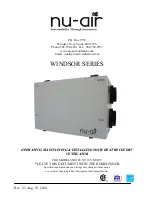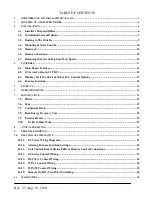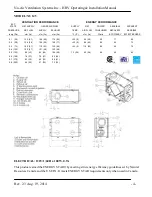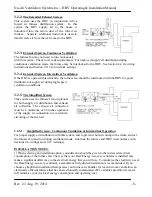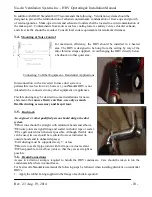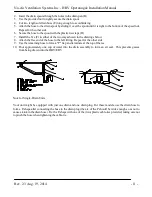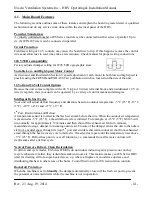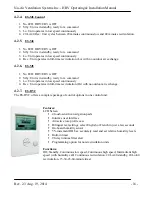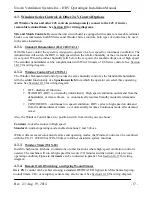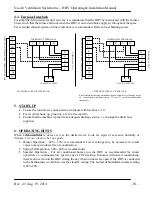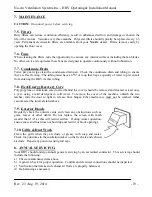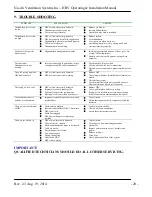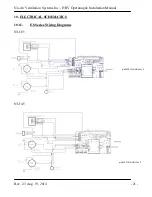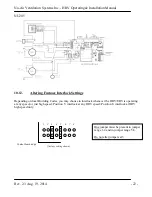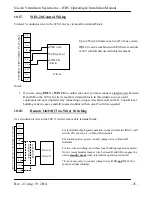
Nu-Air Ventilation Systems Inc. - HRV Operating & Installation Manual
Rev. 2.3 Aug. 19, 2014
- 10 -
In addition ASHRAE Standard 62-99 recommends the following. Ventilation systems should be
designed to prevent the reintroduction of exhaust contaminants, condensation or freeze-ups and growth
of microorganisms. Make-up air inlets and exhaust air outlets shall be located to avoid contamination of
the makeup air. Contaminants from sources such as cooling towers, sanitary vents, vehicular exhaust,
and street traffic should be avoided. Consult local code requirements for minimum distances.
3.4.
Mounting & Noise Control
For maximum efficiency, the HRV should be installed in a heated
area. The HRV is designed to be hung from the ceiling by way of the
anti-vibration straps supplied. Avoid hanging the HRV directly below
a bedroom or other quiet area.
Connecting To Other Equipment - Residential Applications
Interconnection with a forced air furnace duct system is
permissible (see Section 4.4); however, your
Nu-Air
HRV is not
intended to be connected to any other equipment or appliances.
Flexible ducting may be desired in some installations for noise
abatement.
To ensure effective air flow, use only as much
flexible ducting as necessary and keep it taut.
3.5.
Ductwork
An engineer or other qualified person should design the duct
system.
Duct runs should be straight with minimum bends and elbows.
Ensure joints are tight-fitting and sealed with duct tape or sealer.
Use galvanized duct whenever possible. Although flexible duct
can be used, its use should be restricted to areas indicated (to
outside hoods and in unheated spaces).
All ducting must be supported every 3’ or less.
Be sure to seal all pipe joints with foil tape or a duct sealant.
When possible, form elbow joints so that they are as straight as
possible.
3.6.
Drain Connections
Access to a drain or sump is required to handle the HRV condensate. Care should be taken to run the
condensate tube where it cannot freeze.
For best results,
Nu-Air
recommends the following steps be followed when installing drain kits on residential
HRV's.
1.
Apply the rubber O-ring supplied to the flange of each drain spout (A)

